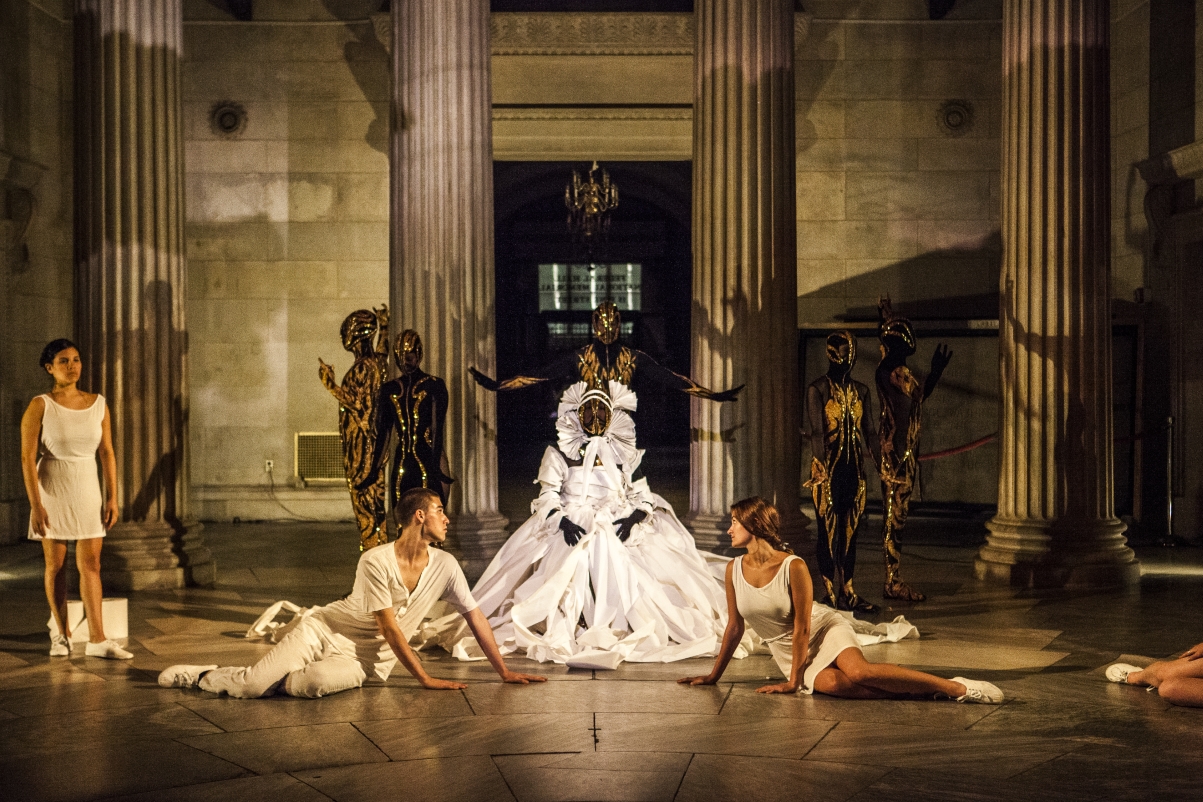CHICAGO — Working as an arts presenter is a hard job, and though I don’t know for certain, I would imagine that working for the City of Chicago is also hard. As Director of Performing Arts for the Department of Cultural Affairs and Special Events (DCASE), Shoshona Currier is doing both: administering city-funded performance-based programming, and simultaneously navigating the inevitable politics and levels of bureaucracy that come with working in government. One might expect that a city-funded dance and performance festival would lean toward populism, but the fourth annual OnEdge Festival tilts quite the opposite direction.
In a phone interview, Currier pointed out that the role of the city is to provide something for everyone, and that includes the big, popular events, and also the obscure, avant-garde, and underrepresented performers highlighted in OnEdge. “People consume their culture in different ways,” said Currier. “Some people want to sit on the lakefront with 150,000 other people and watch planes fly over their heads, and some want to sit in the dark with 100 people and watch a performance. I love our big festivals and gallery openings, because they give me space to do other things. There’s room for all of it.”
This is particularly true for Chicago, whose total rewrite of the arts and culture sector in 2012 led to the Chicago Cultural Plan and restructuring of DCASE. Part of that plan included the prioritization of attracting a vibrant and diverse pool of artists to Chicago, and, more importantly, keeping them here. Because the city can hit its financial goals with events like Jazz Fest or the Air and Water Show, Currier has a lot of freedom to fill gaps in underrepresented areas of arts and entertainment such as dance and performance art.
I was curious, though: is the goal of OnEdge to engage more artists with the city, or more of the city with artists? The answer is pretty much c) all of the above, but while cross-pollination — getting people who go to zoo lights to attend Three Matadores (a micro-play about identity and violence set in a bullring) and vice-versa — Currier knows that won’t always be possible.
“Dance can be a hard sell,” she said, even when everything is free. And yet, as of the last count 54,000 people attended OnEdge events in its first three seasons. “We have to really talk to our audiences in specific ways, and connect with them year round… So OnEdge makes a point of hosting many of its performances in neighborhoods — we do it in different communities.” By confronting Chicagoans in their familiar spaces with “aesthetically rigorous and innovative dance,” Currier says, they “get out of consistent feedback loops and algorithms… Hopefully it feels open and accessible.”

This point about how we consume culture gave me pause to consider the ongoing debate on consuming news and other media, and the comfort that comes from living in an echochamber. The moments that stand out to me as a consumer of art weren’t the most pleasant, or the most comfortable. Performances that engage in a dialogue (be that internally or with others) are the ones that helped challenge my assumptions, and were ultimately the most rewarding. Which leads back to Currier’s earlier point: that there’s room for all of it.
This year’s OnEdge, running through March 25, focuses specifically on equity and inclusion, providing a platform for artists whose voices represent “otherness” — be that through race, gender, or sexuality. Berliner Ligia Lewis approaches the question with minor matter, a theatrical interpretation of blackness in an era of anti-blackness drawing from the concept of minor aesthetics (a rejection of commonly accepted notions of beauty). In the Three Matadores, four theater artists set spoken word in a bullring, using the metaphor of the matador to contextualize (or rationalize) violence and identity. Solo performer NIC Kay explores queerness and blackness through a performative investigation of the New York club scene, while Yanira Castro pits the Occupy Wall Street movement against a backdrop of the gilded age of Louis XIV’s court, often cited as the origin of ballet. Her work questions “how it is that we gather,” and who really has the power: performer or audience.
—
The already underway OnEdge Festival, presented by DCASE, continues through March 25. “minor matter” by Ligia Lewis is March 3-4, 6:00 p.m. at the Chicago Cultural Center dance studio at 78 E. Washington St.
“Three Matadores is March 11 (7:00 p.m.) through 12 (2:00 p.m.) at the Reva and David Logan Center for the Arts, 915 E. 60th St.
“lil BLK” by NIC Kay runs March 16-18, 2017, at Hamlin Park Fieldhouse, 3035 N. Hoyne Ave.
Yanira Castro’s company, a canary torsi, presents “Court/Garden”
March 24 -25, 2017, 7:30 p.m. at the Chicago Cultural Center’s Preston Bradley Hall, 78 E. Washington St.
All events are free, with seats available on a first-come, first-served basis 60 minutes prior to each performance. For more information and a complete schedule, visit cityofchicago.org/dcase.
